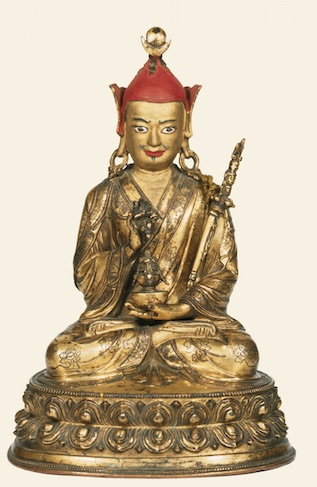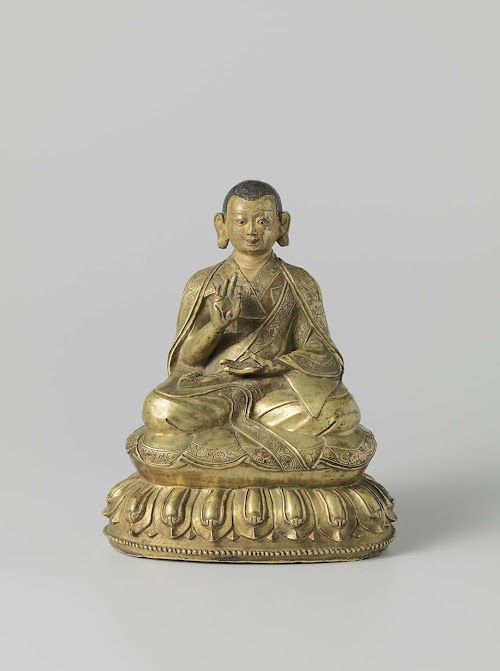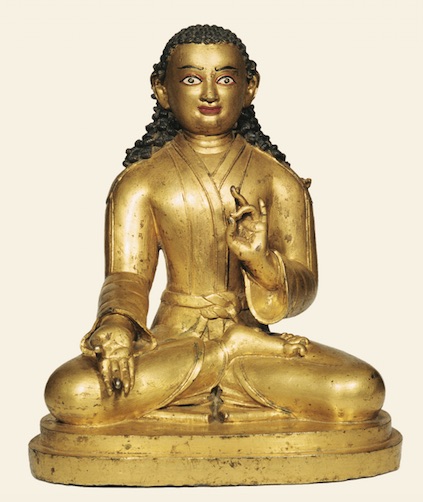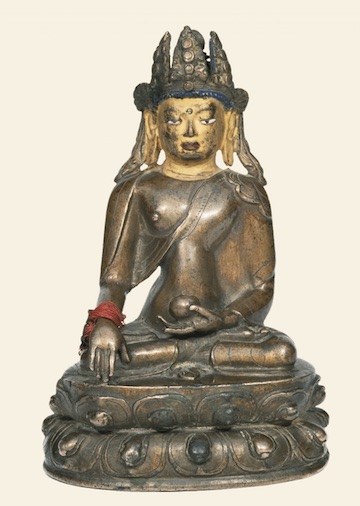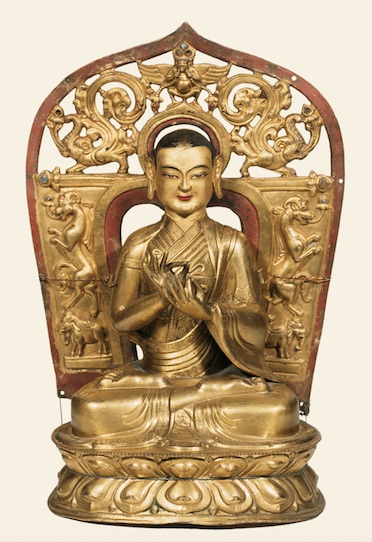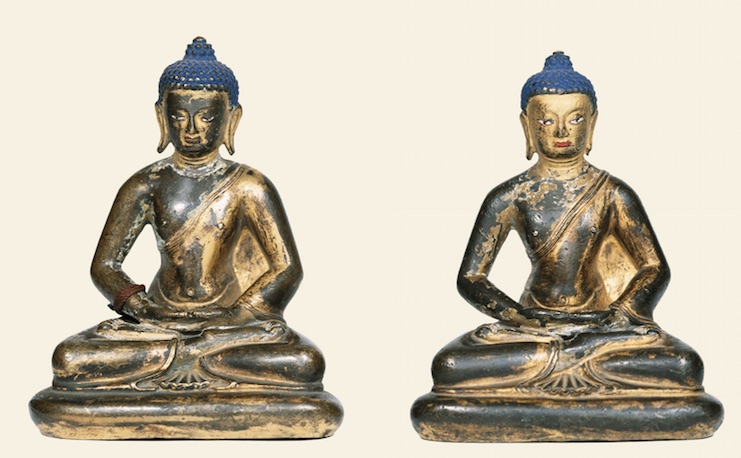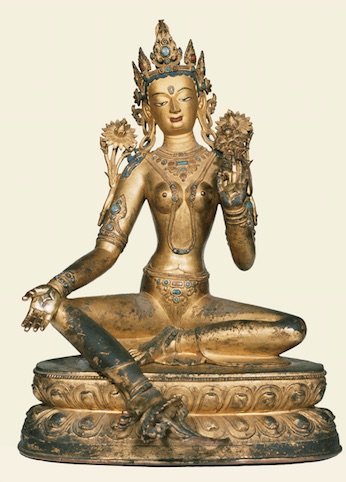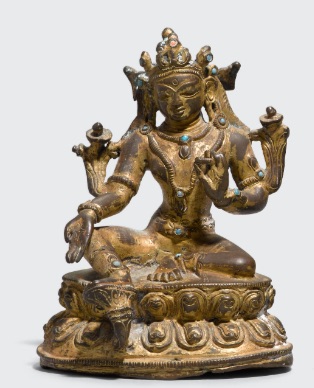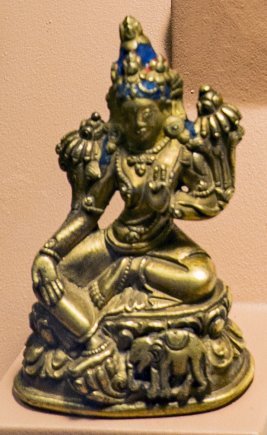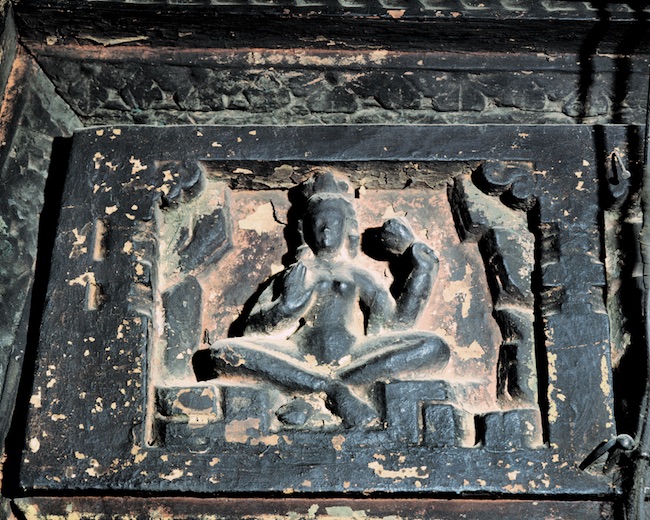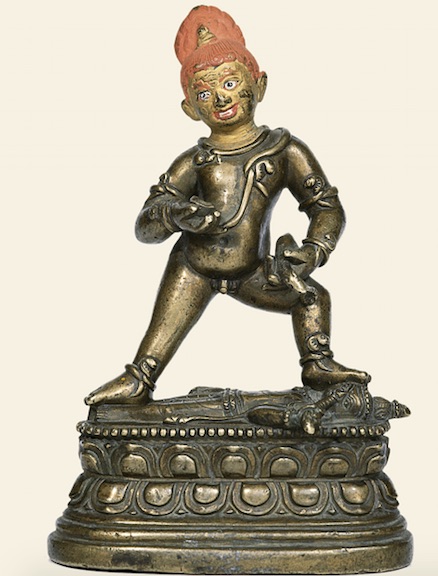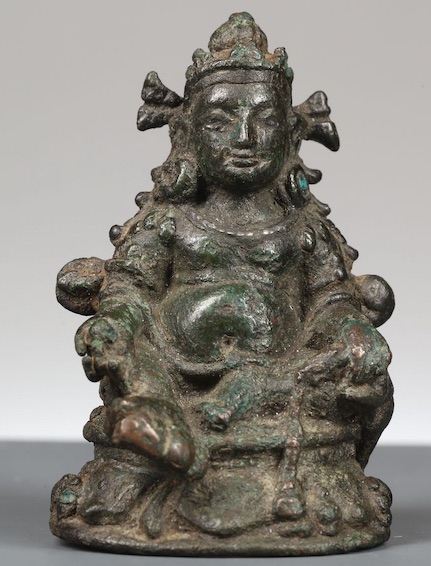15th century, Tibet, Tantric Manifestation of Padmasambhava (?), gilt copper, 20,8 cm, photo: courtesy of Ulrich von Schroeder, Buddhist Sculptures in Tibet Volume Two, Visual Dharma Publications, Hong Kong, p. 1046 pl. 263A , Potala Collection, Bla ma lha khang inventory nº 833, Lhasa (Tibet).
Clad in a bone apron and adorned with bone jewellery, this intriguing male figure stands with one foot on the hide of a hoofed animal placed on the lotus base. He has a skull cup in his right hand and appears to have held a ritual staff in the other – two of Padmasambhava’s attributes.
16th-17th century, Tibet, Padmasambhava, gilt copper, 25,7 cm, photo as before, p. 1079 pl. 279B, at the gTsug lha khang in the sMin grol gling (Mindroling) monastery (Tibet).
The standard form is seated and usually holds a vajra sceptre pointing to his heart, a skull cup containing nectar, gems and a long-life vase, and has a ritual staff propped against his left arm. His lotus hat is normally decorated with a sun disc and crescent moon symbol at the front and one or three vulture feathers on a lotus at the top. On this image, the sun and moon are used as a finial. He wears felt boots and sumptuous silk lay garments (that cover both arms).
16th century, Tibet, Padmasambhava, gilt copper alloy with cold gold and paint, 13 cm, private collection, Asian Art A209AS lot 107, 18th June 2024, Koller
16th century, Tibet, Padmasambhava, copper alloy with silver and copper inlay, 16 cm, private collection, Arts d’Asie lot 17, 14th June 2024, Sotheby’s (Paris).
18th-19th century, Tibet, Padmasambhava with two consort figures, bronze, 11,7 cm, private collection, Asian Art Online Only lot 726, 3rd June 2024, Nagel
Padmasambhava/Guru Rinpoche depicted with two of his consorts: Mandarava, a princess from Himachal Pradesh, and Yeshe Tsogyal, a princess from Tibet. They each hold a skull cup in one hand and make the fear-allaying gesture with the other.


